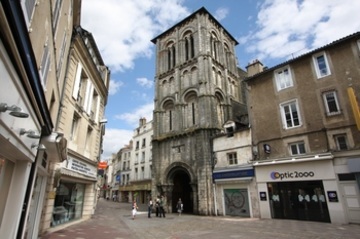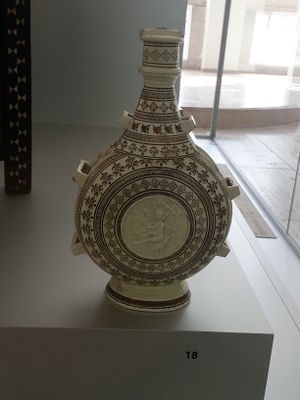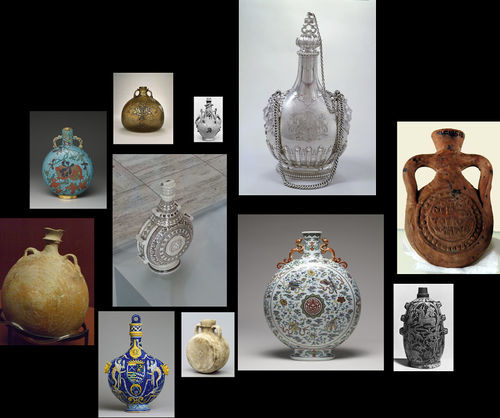Difference between revisions of "User:JMvdKOLK/MuseumOfFantasticForgeries"
| Line 11: | Line 11: | ||
[[File:VASE EXAMPLES.jpg|500px]] | [[File:VASE EXAMPLES.jpg|500px]] | ||
| − | Our bottle has not much information, but enough to possible deduce what the user was worshipping. it's made using relief-application. A method of adding pieces of clay to the layer which creates relief. It's origin is in France, | + | Our bottle has not much information, but enough to possible deduce what the user was worshipping. it's made using relief-application. A method of adding pieces of clay to the layer which creates relief. It's origin is in France, Saint Porchaire from 1525-1565. There is a church in Pontiers named the St. Porchaire. It was finished in the 16th century, It's a sacred place for pilgrims to visit. This is because the sacrophage of ST. porchaine. The church's origin is from Carolingian dynasty, romanisque and gothic. It also has The Twelve Apostles imagery which make me believe it's faith is based on Christianity. The imagery on the pilgrim's bottle is also depicted a person with a religious cross. |
| + | It poses a question of what journeys it has made, what it was depicting and how it ended up here in holland?<br> | ||
| + | [[File:Churchgothic.jpg]] | ||
| + | |||
| + | ===The Journey ahead=== | ||
| + | My current idea was to recreate this object in 3D, its idea of relief-application made me think about sculpting this in a 3D environment and find a way to make it real. This could be 3D printing or another way. I feel the need that it has to be wearable, The object has been stripped of its use by placing it in the museum, while for me the most fascinating part of the item was its journey. | ||
</center> | </center> | ||
Revision as of 22:24, 21 September 2015
Personal Notes: HERE
The Object
The Object I chose was from the Boijmans Museum and exhibited in the Design collection. The object was one of the items I chose for the kick off week. I chose it based on shape and form, so I did not find out what it actually was. When I had to choose an object for this assignment, I was still intrigued by this item and wanted to know more of it.
The Beginning
The first thing I did, was figuring out what it actually was. On the Boijmans website I managed to track it down in their online catalogue. It gave me its history, material and what it was. There was not a lot of information given about the certain object except that it is a pilgrim's bottle. So what's a pilgrim bottle? A pilgrim bottle was an object carried by travelers on their journey. While most that survived were very expensive that it is assumed that they must be purely for display; however they were made everywhere from Asia to Europe and various materials. They all retain the same characteristics though. it's a vessel with a body from an almost full circle, flattened, to a pear shape with a shortish neck, a spreading foot and, generally, two loops on the shoulders. Through the loops either a chain or a cord was passed from carrying the bottle or for maintaining the stopper in place. Additionally, They have religious imagery.
Our bottle has not much information, but enough to possible deduce what the user was worshipping. it's made using relief-application. A method of adding pieces of clay to the layer which creates relief. It's origin is in France, Saint Porchaire from 1525-1565. There is a church in Pontiers named the St. Porchaire. It was finished in the 16th century, It's a sacred place for pilgrims to visit. This is because the sacrophage of ST. porchaine. The church's origin is from Carolingian dynasty, romanisque and gothic. It also has The Twelve Apostles imagery which make me believe it's faith is based on Christianity. The imagery on the pilgrim's bottle is also depicted a person with a religious cross.
It poses a question of what journeys it has made, what it was depicting and how it ended up here in holland?

The Journey ahead
My current idea was to recreate this object in 3D, its idea of relief-application made me think about sculpting this in a 3D environment and find a way to make it real. This could be 3D printing or another way. I feel the need that it has to be wearable, The object has been stripped of its use by placing it in the museum, while for me the most fascinating part of the item was its journey.

